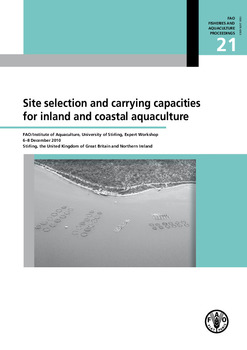Carrying capacities and site selection within the ecosystem approach to aquaculture

Citation
Lindsay, G. Ross et al. (2013). Carrying capacities and site selection within the ecosystem approach to aquaculture. p. 19-46. In: In: Ross, L.G. ; Telfer, T.C. ; Falconer, L. ; Soto, D. & Aguilar-Manjarrez, J. (eds) Site selection and carrying capacities for inland and coastal aquaculture, FAO/Institute of Aquaculture, University of Stirling, Expert Workshop, 6–8 December 2010. Stirling, the United Kingdom of Great Britain and Northern Ireland. FAO Fisheries and Aquaculture Proceedings No. 21. Rome, FAO. 282 pp.
The growth in world aquaculture required to meet the demands of society will result in ever-increasing pressure upon aquatic and terrestrial resources. There are also potential consequences on the environment and on biodiversity, as well as inevitable societal impacts. There is growing adoption of aspects of the ecosystem approach to aquaculture (EAA), which takes a holistic view of the developments in the sector in an attempt to enable sustainable growth while avoiding negative effects. Carrying capacity is a major component of EAA, but defining what is meant by carrying capacity, how to evaluate it and how to implement standards is not a straightforward matter. This global review summarizes present views on this topic, and considers definitions of the different carrying capacities and methods and models for their evaluation. It also identifies some outstanding questions and bottlenecks. Proposals are made for a way forward that may result in flexible guidelines for implementing wellplanned site selection and carrying capacity estimations within the EAA.
Permalink
Date Available
Type
Publisher
Research Themes
Topics
Language